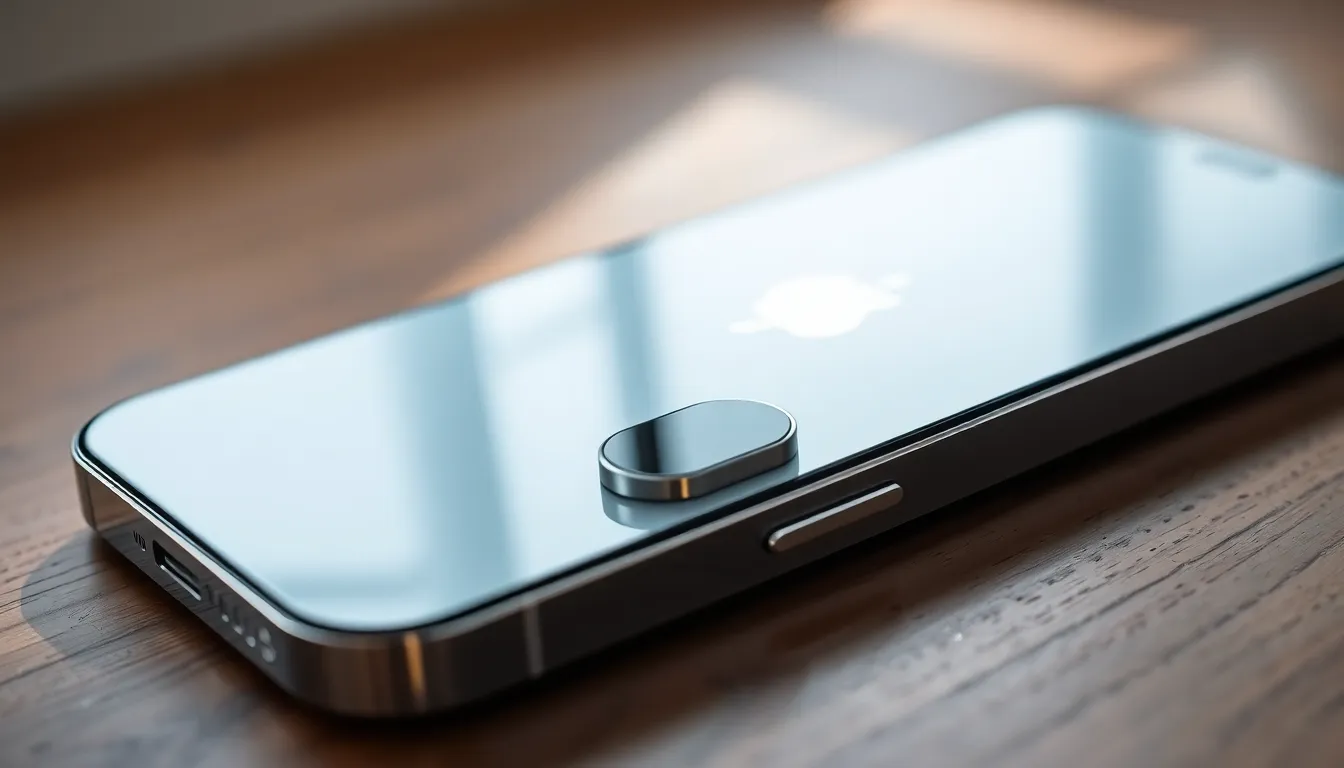Imagine this: you’re in a meeting, and suddenly your phone vibrates like a caffeinated squirrel. You reach for your iPhone 13 only to realize the ringer’s off. Panic sets in as you miss an important call. Don’t let this happen to you! Knowing how to turn the ringer on can save you from those awkward moments.
Table of Contents
ToggleUnderstanding Ringer Settings
Ringer settings play a crucial role in managing notifications on the iPhone 13. Knowing how to adjust these settings can ensure that important calls are never missed.
What Is the Ringer?
The ringer is the sound an iPhone makes when receiving calls or alerts. Users customize this sound to suit their preferences. It consists of different tones and vibrations that signal incoming communications. The ringer settings help distinguish calls from other notifications. When the ringer is activated, it provides audible alerts that facilitate acknowledgment of calls.
Importance of Ringer Functionality
Ringer functionality is vital for staying connected. Without it, users might miss significant calls, leading to missed opportunities. Many professionals rely on their phones to receive important updates, especially during work hours. It enhances communication in social situations, avoiding misunderstandings related to silent devices. A properly functioning ringer ensures that alerts capture attention promptly, minimizing the risk of missing critical information.
Step-by-Step Guide to Turn Ringer On

Turning the ringer on for an iPhone 13 protects against missed calls. Follow these easy steps to ensure your device is ready to notify you.
Using the Physical Ring/Silent Switch
The first method involves the physical ring/silent switch located on the left side of the iPhone 13. Flipping this switch exposes a small orange indicator. When visible, the phone is in silent mode. To enable the ringer, simply flip the switch down, concealing the orange color. Hearing incoming calls becomes possible without further adjustments. This quick action allows immediate access to ringer functionality.
Adjusting Ringer Volume via Settings
Accessing the Settings app offers another way to adjust ringer volume. Tapping on “Sounds & Haptics” reveals several audio options. Here, the user can modify the ringer and alerts volume slider. Sliding it to the right increases the sound level. Customizing vibrate settings also ensures that calls attract attention, even in noisy environments. The ringer will now play at the chosen volume, ensuring potential calls won’t go unnoticed.
Troubleshooting Common Issues
Understanding ringer issues is essential for a seamless experience with the iPhone 13. Users might encounter problems with their ringer, making troubleshooting key for effective communication.
Ringer Not Working
Users can face situations where the ringer doesn’t produce sound, despite settings appearing correct. One common cause involves the Mute switch. Confirming that the switch is not set to silent can resolve the issue. Additionally, checking the volume level ensures the ringer isn’t set too low. Custom ringtones may sometimes conflict or fail to alert, so reverting to default sounds might help. Background noise can also affect ringer perception, so testing the device in a quieter space is advisable. Another viable solution includes restarting the device, as this often resolves temporary glitches.
Software Updates and Ringer Issues
Staying updated with the latest software plays a critical role in ensuring ringer functionality. Outdated software can result in bugs affecting system notifications. Regularly checking for updates is important, as Apple frequently releases improvements. To check for updates, navigate to Settings, select General, and then tap Software Update. Installing the latest version often resolves hidden glitches and enhances performance. If problems persist after updating, resetting all settings may restore ringer functionality. This reset retains user data while refreshing system configurations, which can rectify lingering issues.
Alternative Methods to Control Ringer
Adjusting the ringer on an iPhone 13 can be achieved through multiple methods, offering users flexible control over notifications.
Using AssistiveTouch
AssistiveTouch provides an alternative way to manage the ringer. Users can enable AssistiveTouch in the Accessibility settings. Once activated, they can access the virtual menu by tapping the floating icon. From there, selecting “Device” opens options for volume adjustments. Increasing the ringer volume through this interface allows for quick changes. This method is particularly useful for those who prefer touch options over physical buttons.
Setting Up Do Not Disturb Mode
Do Not Disturb Mode allows users to customize call and alert notifications. When activated, it silences all incoming calls and messages. Users can adjust settings to allow calls from specific contacts, ensuring priority notifications still come through. Accessing this feature requires navigating to the Settings app and selecting “Focus.” Custom schedules can also be set, tailoring notification preferences during meetings or sleep. This function balances connectivity and quietness, promoting a focused use of the iPhone 13.
Knowing how to turn the ringer on an iPhone 13 is essential for staying connected and avoiding missed calls. By following the simple methods outlined in the article users can ensure their phone is ready to alert them to important notifications. Customizing ringer settings not only enhances personal preferences but also helps in managing notifications effectively.
Troubleshooting common issues can further enhance the ringer’s functionality. Whether it’s adjusting settings or exploring alternative methods like AssistiveTouch, users have various options at their disposal. Staying proactive about ringer settings can make all the difference in maintaining effective communication and staying informed in both personal and professional contexts.



